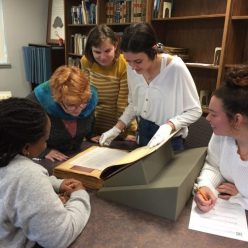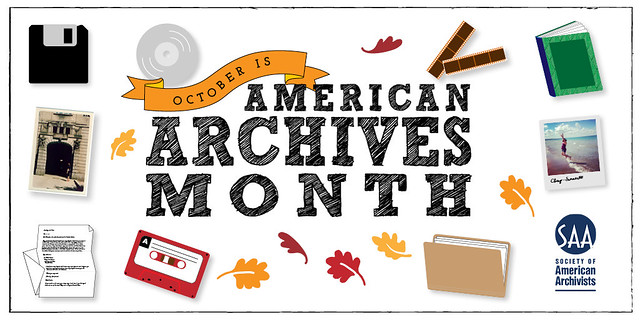by Ethan Dykes, HIS 368 Intern in Special Collections and Archives
As an up and coming history major at Old Dominion University, I was excited to receive the opportunity to work as an intern at the Special Collections Department in the Perry Library. I have always been curious about the specifics behind the jobs that entail the collection, study, and preservation of historical materials. This being my final semester at the university I was thankful for the opportunity to learn all I could about archival work before I graduated. Unfortunately, due to the Covid-19 Pandemic, I would have to do the internship remotely rather than the usual in-person experience. Still, I believed this to be a good opportunity to see what working in an archive facility was like and if I would consider it as a job for myself in the future. Needless to say I have been pleasantly surprised by how much I have learned about archival work and the types of materials I have gotten to work with despite the global pandemic.
Unexpected Lessons
My first few assignments in the internship mostly involved getting to know the staff and reading the training modules for archival work. To my surprise, the training module held a plethora of information on the specifics of archival work, and I learned many unexpected lessons. Not only did the modules define the different types of archives in the world and what they look to collect, but how they may sort and preserve those different types of materials. Many paper materials, for example, need to be kept in properly humidified places with dim light and kept in containers safe from dust and bugs. I knew from common sense that paper materials certainly needed to be kept clean and with minimal exposure, but I did not know the amount of tiny specifics that were important to keep those materials in good condition. Such things included the importance of using iridescent bulbs and not fluorescent ones in rooms with paper or other materials to prevent deterioration from ultraviolet rays. I also learned much about the importance of structure and safety in archival facilities. Archives have to be careful of how their buildings are built and manage to ensure safety from disasters and accidents, such as water leaks from air conditioning units. There is also a surprising amount of importance on security, such as the need to organize materials in a certain way that prevents just anyone from looking something up and being able to take it. Archival work has a surprising amount of complexities and small details that one must learn if they wish to be able to handle historical documents.
Of Surprising Importance
Other than learning much about archival work and the surprising amount of information required to conduct such labor, I have also found archival work to be of surprising importance to the world of history. As a historian, I always knew that archives played a key role in the study of historical materials but I did not initially see their overall importance. Archives do not simply gather and preserve information, which in of itself is of significance, they also organize, label, and make that information easy to access to the public and to historians. Those wishing to research certain materials for a book or paper may easily find themselves in the depths of an archive facility shifting through shelves of materials. Many archives are also the keepers of documents one would not find anywhere else in the world, and are thus of major importance to the preservation of local and smaller portions of history. Archives are not only more complicated than I initially thought, they are also of greater significance than one such as myself may originally think. They are a key cog in the machine that preserves and teaches the world’s history.
A New Found Respect
Overall, I am thoroughly enjoying my time with this internship so far, and have a new found respect for those who work in archives. The work I’ve done so far has been interesting and insightful, with a plethora of information about archival work. A person outside of the archival world, such as my previous self, may believe it to be simple and easy. But there is actually a science to it, a methodology that is used to best preserve the world’s history. This has been the most useful and world-changing lesson I have learned so far from the internship. In just a few weeks I have had the privilege of learning about the importance of archival work and the amount of effort that goes into it. I strongly recommend anyone interested in archival work, or in other professions of history, to seek out information on the methods behind archive work. It may yet offer a new perspective on your view of the work behind historical preservation and research.


